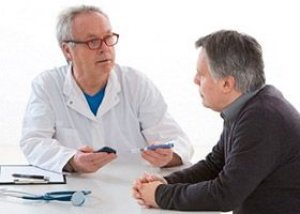
All iLive content is medically reviewed or fact checked to ensure as much factual accuracy as possible.
We have strict sourcing guidelines and only link to reputable media sites, academic research institutions and, whenever possible, medically peer reviewed studies. Note that the numbers in parentheses ([1], [2], etc.) are clickable links to these studies.
If you feel that any of our content is inaccurate, out-of-date, or otherwise questionable, please select it and press Ctrl + Enter.
Hyperprolactinemic hypogonadism
Medical expert of the article
Last reviewed: 07.07.2025

At present, there is a lot of data on the effect of prolactin on the human reproductive system. It has been established that it actively influences the hormonal and spermatogenic functions of the testicles. Under physiological conditions, prolactin stimulates testosterone synthesis. However, long-term hyperprolactinemia disrupts its production in the testicles. A decrease in the level of this hormone in the plasma of patients with prolactinomas has been revealed, and with long-term treatment with neuroleptics that increase prolactin secretion in men, an inverse correlation between prolactin and testosterone levels in plasma has been noted. Hyperprolactinemia that occurs in the prepubertal and pubertal periods can lead to delayed sexual development and hypogonadism. In the genesis of the disease, an important role belongs to the disruption of testosterone conversion into its most biologically active metabolite - dihydrotestosterone in peripheral tissues, which explains the clinical severity of androgen deficiency with a relatively small decrease in the level of testosterone in the plasma. In long-term hyperprolactinemia, a decrease in the level of gonadotropins was also revealed. In prolactinomas, examination of testicular tissue showed atrophy of Leydig cells with preserved seminiferous tubules.
Hyperprolactinemia is usually combined with symptoms of hypogonadism, loss of libido, gynecomastia, and impaired spermatogenesis. Since the most common cause of the disease is prolactin-producing pituitary adenoma - prolactinoma, then with a decrease in sexual activity in men in combination with signs of hypogonadism, it is necessary to conduct an X-ray examination of the skull and visual fields. The combination of decreased sexual activity with an increase in the sella turcica on the radiograph is characteristic of prolactinoma. Microadenomas of the pituitary gland, as a rule, do not cause an increase in the size of the sella turcica. In such cases, determining the level of prolactin in the plasma helps in diagnosis, which in prolactinomas can be increased by tens and even hundreds of times. It is known that in 40% of patients with somatotropin-producing pituitary adenoma, the level of prolactin in the plasma is increased. Sometimes hyperprolactinemia also occurs in Itsenko-Cushing's disease. However, the level of prolactin in these diseases is not as high as in prolactinomas.
With volumetric processes in the hypothalamus, so-called hypothalamic hyperprolactinemia may occur, but in this case the prolactin level is also not as high as with prolactinomas.
Hyperprolactinemia is also detected in a significant number of patients with primary hypothyroidism due to increased secretion of TRH - dyshormonal hyperprolactinemia.
It has been proven that many medications contribute to the development of hyperprolactinemia - drug-induced hyperprolactinemia. Such medications include: the phenothiazine group (chlorpromazine, haloperidol, etc.), antidepressants (amitriptyline, imipramine) and antihypertensive agents (reserpine, a-methyldopa).
Treatment of hyperprolactinemic hypogonadism. Currently, conservative and surgical methods are used. Parlodel (bromocriptine) is the most effective for the treatment of non-neoplastic forms of hyperprolactinemia. Doses are selected based on the level of prolactin in the plasma. As a rule, doses of 5-7.5 mg (2-3 tablets per day) are effective. The use of drugs that reduce prolactin secretion (parlodel, metergoline, pergolide, lisinil, L-DOPA) is justified when a decrease in prolactin levels is observed in response to treatment. In some cases, combined therapy with parlodel and human chorionic gonadotropin or androgens is advisable.
In tumor forms of hyperprolactinemia, sometimes, especially with narrowing of the visual fields, it is necessary to resort to surgical removal of pituitary adenomas. Panhypopituitarism often occurs after this. Then replacement therapy is prescribed with those hormones whose deficiency arose after the operation (chorionic gonadotropin, thyroidin, etc.).
In hyperprolactinemia associated with hypothyroidism, treatment with thyroid drugs usually results in a decrease in plasma prolactin levels and restoration of sexual function. If drug-induced prolactinemia occurs, the drugs that caused the increase in plasma prolactin levels should be discontinued.
What do need to examine?
What tests are needed?
Who to contact?


 [
[